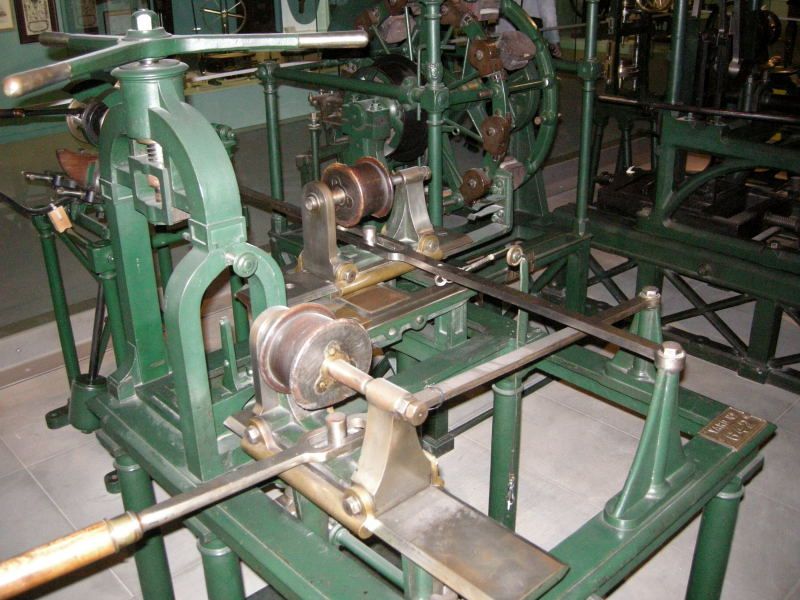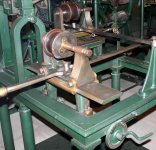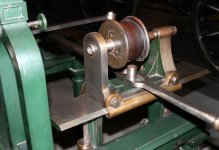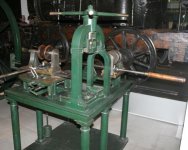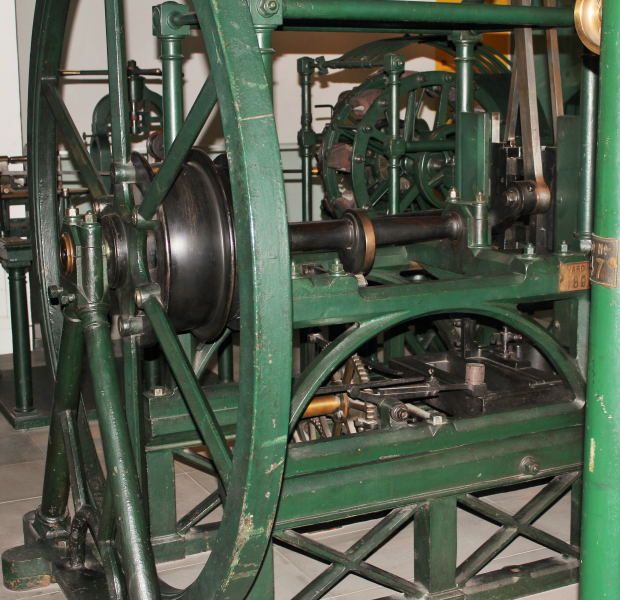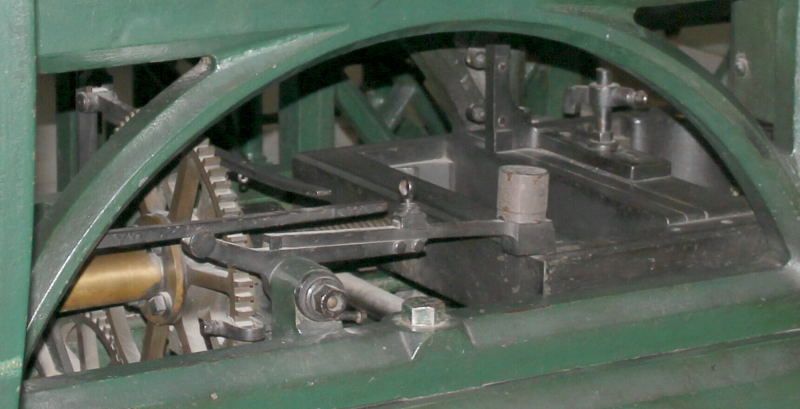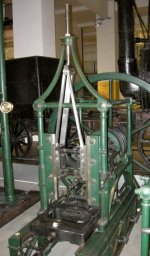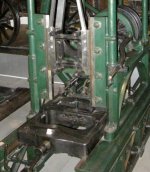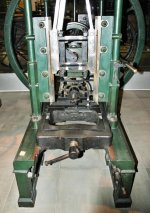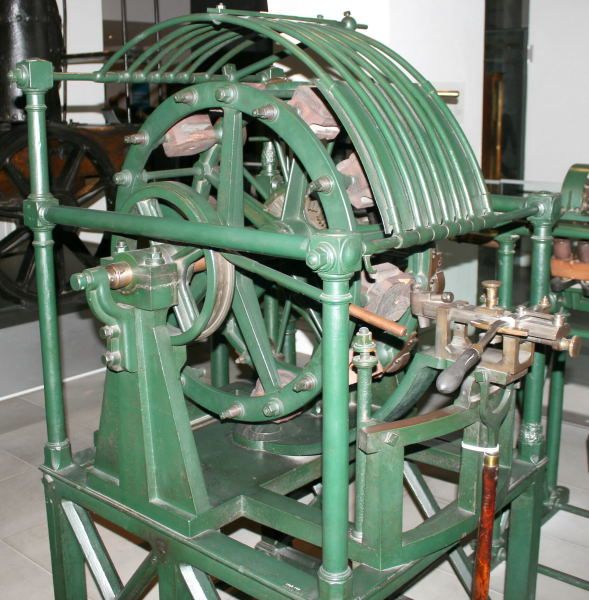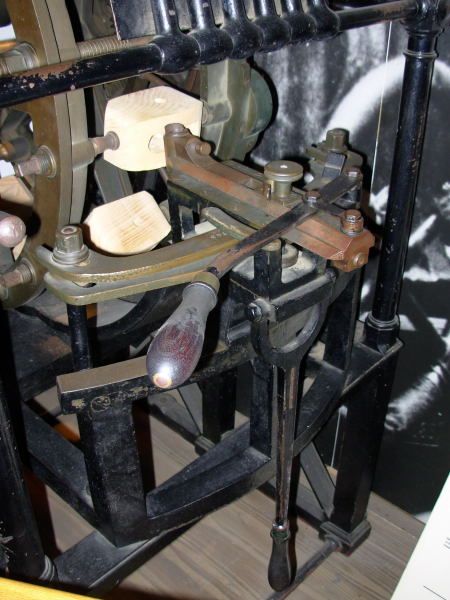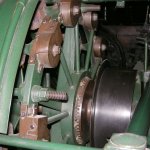Asquith
Diamond
- Joined
- Mar 3, 2005
- Location
- Somerset, UK
I showed a few photos of machines for producing ship's blocks in this thread:-
http://www.practicalmachinist.com/vb/antique-machinery-and-history/bramah-maudslay-319723/
The machines were installed at Portsmouth Dockyard, starting in 1803, and had a very long working life. Marc Brunel was responsible for the design of the machinery. Henry Maudslay was contracted to make them, and he would inevitably have been involved in the detail design.
The blocks were for the rigging of the Royal Navy's ships, and at the time over 100,000 new blocks were needed every year. In addition to quantity, quality was of prime importance, to avoid the risk of jamming during close-quarter manoeuvres in battle.
The machinery was designed for fast, interchangeable production.
Having offered to post pictures of the machines, I realise that having lots of pictures is one thing, but describing their use is another matter, especially as I haven't studied them in depth. I have found good but lengthy descriptions of the production of the blocks, but can hardly transcribe them to this thread. We'll just have to see how we go.
Wkipedia has a good write-up, but lacks photos of the machines.
Portsmouth Block Mills - Wikipedia, the free encyclopedia
Here's a picture of a block:-
http://cache4.asset-cache.net/gc/90742458-ships-pulley-block-made-on-portsmouth-block-gettyimages.jpg?v=1&c=IWSAsset&k=2&d=X7WJLa88Cweo9HktRLaNXoh%2BYEO3f24soRziKuBLTDFAK6jzy1tyoJWtzdr8ye3DJc6ac4la1HBGEdDAzXUFD9siN2veX33735VOmDgjNLM%3D
Various sizes were made, having either one or two pulleys (sheaves) or no sheaves at all ('dead eyes').
A single sheave block had eight components:-
Elm block, with a hole for the sheave's pin, a slot for the sheave and rope, and grooves on the side faces for the fixing ropes.
A sheave made of lignum vitae. This was faced on the side, grooved on the rim, and bored for a bush - a bell metal casting known as the coak. The casting had a three hole flange on one side, and a loose flange on the other. On assembly, three holes were drilled through for pins, and these were riveted over by a machine to secure the coak.
A burnished pin with a square end was the pivot for the sheave.
The London Science Museum published a 42 page booklet in 1965 called The Portsmouth Blockmaking Machinery, by K R Gilbert. He listed 22 types of machine at the Portsmouth Block Mills. In some cases there were several examples, making 45 machines in total. 8 went to the Science Museum and 6 remained at Portsmouth. 8 of Maudslay's models went to the National Maritime Museum. Unfortunately there is much overlap in the surviving types, so only 10 types are represented by actual surviving machines or models. Looking at photos, it is clear that where machines were duplicated, there were design changes. Presumably all the ones in the Science Museum are the original version.
Some or many photos will follow.
http://www.practicalmachinist.com/vb/antique-machinery-and-history/bramah-maudslay-319723/
The machines were installed at Portsmouth Dockyard, starting in 1803, and had a very long working life. Marc Brunel was responsible for the design of the machinery. Henry Maudslay was contracted to make them, and he would inevitably have been involved in the detail design.
The blocks were for the rigging of the Royal Navy's ships, and at the time over 100,000 new blocks were needed every year. In addition to quantity, quality was of prime importance, to avoid the risk of jamming during close-quarter manoeuvres in battle.
The machinery was designed for fast, interchangeable production.
Having offered to post pictures of the machines, I realise that having lots of pictures is one thing, but describing their use is another matter, especially as I haven't studied them in depth. I have found good but lengthy descriptions of the production of the blocks, but can hardly transcribe them to this thread. We'll just have to see how we go.
Wkipedia has a good write-up, but lacks photos of the machines.
Portsmouth Block Mills - Wikipedia, the free encyclopedia
Here's a picture of a block:-
http://cache4.asset-cache.net/gc/90742458-ships-pulley-block-made-on-portsmouth-block-gettyimages.jpg?v=1&c=IWSAsset&k=2&d=X7WJLa88Cweo9HktRLaNXoh%2BYEO3f24soRziKuBLTDFAK6jzy1tyoJWtzdr8ye3DJc6ac4la1HBGEdDAzXUFD9siN2veX33735VOmDgjNLM%3D
Various sizes were made, having either one or two pulleys (sheaves) or no sheaves at all ('dead eyes').
A single sheave block had eight components:-
Elm block, with a hole for the sheave's pin, a slot for the sheave and rope, and grooves on the side faces for the fixing ropes.
A sheave made of lignum vitae. This was faced on the side, grooved on the rim, and bored for a bush - a bell metal casting known as the coak. The casting had a three hole flange on one side, and a loose flange on the other. On assembly, three holes were drilled through for pins, and these were riveted over by a machine to secure the coak.
A burnished pin with a square end was the pivot for the sheave.
The London Science Museum published a 42 page booklet in 1965 called The Portsmouth Blockmaking Machinery, by K R Gilbert. He listed 22 types of machine at the Portsmouth Block Mills. In some cases there were several examples, making 45 machines in total. 8 went to the Science Museum and 6 remained at Portsmouth. 8 of Maudslay's models went to the National Maritime Museum. Unfortunately there is much overlap in the surviving types, so only 10 types are represented by actual surviving machines or models. Looking at photos, it is clear that where machines were duplicated, there were design changes. Presumably all the ones in the Science Museum are the original version.
Some or many photos will follow.


